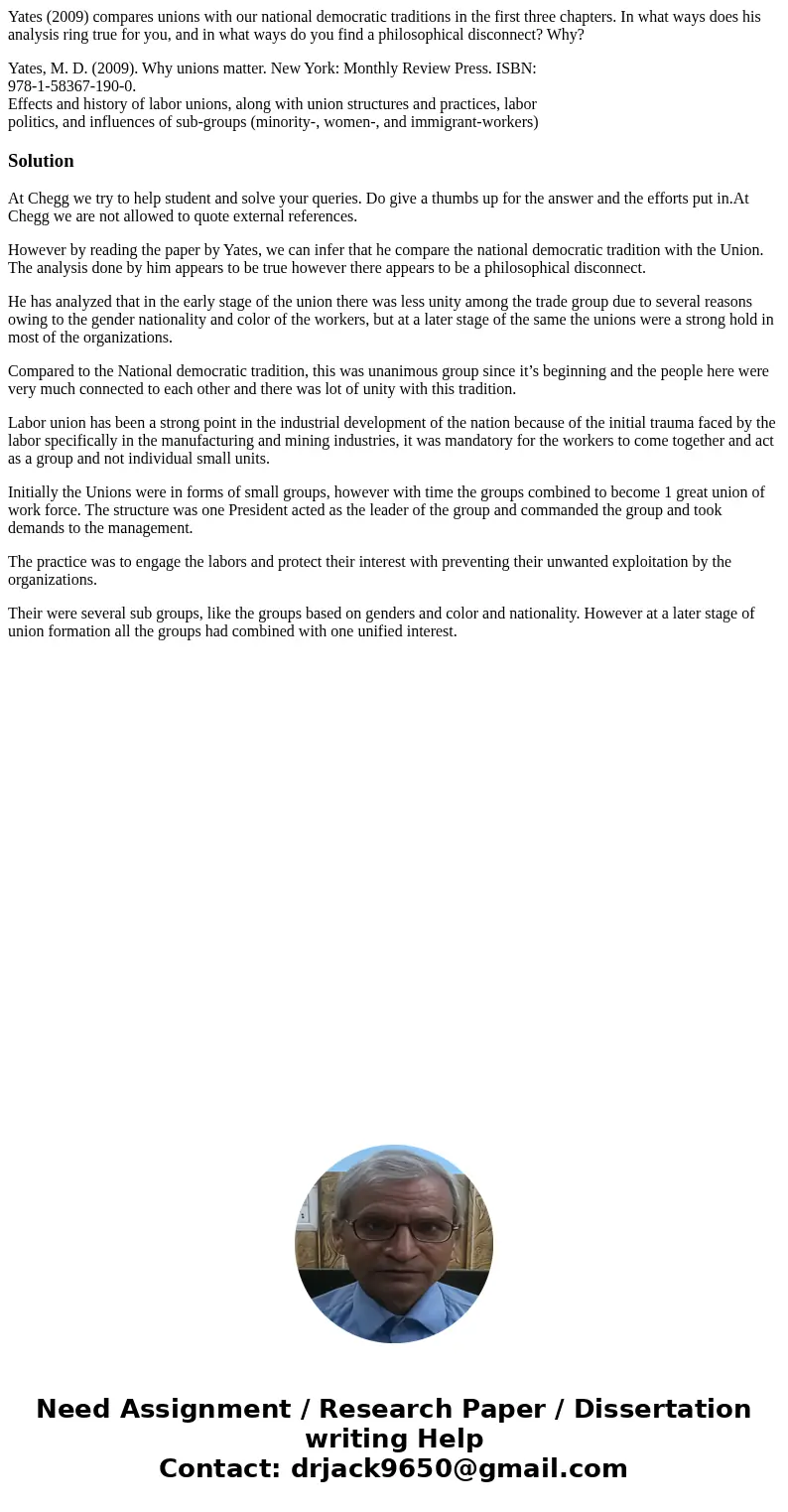Yates 2009 compares unions with our national democratic trad
Yates (2009) compares unions with our national democratic traditions in the first three chapters. In what ways does his analysis ring true for you, and in what ways do you find a philosophical disconnect? Why?
Yates, M. D. (2009). Why unions matter. New York: Monthly Review Press. ISBN:
978-1-58367-190-0.
Effects and history of labor unions, along with union structures and practices, labor
politics, and influences of sub-groups (minority-, women-, and immigrant-workers)
Solution
At Chegg we try to help student and solve your queries. Do give a thumbs up for the answer and the efforts put in.At Chegg we are not allowed to quote external references.
However by reading the paper by Yates, we can infer that he compare the national democratic tradition with the Union. The analysis done by him appears to be true however there appears to be a philosophical disconnect.
He has analyzed that in the early stage of the union there was less unity among the trade group due to several reasons owing to the gender nationality and color of the workers, but at a later stage of the same the unions were a strong hold in most of the organizations.
Compared to the National democratic tradition, this was unanimous group since it’s beginning and the people here were very much connected to each other and there was lot of unity with this tradition.
Labor union has been a strong point in the industrial development of the nation because of the initial trauma faced by the labor specifically in the manufacturing and mining industries, it was mandatory for the workers to come together and act as a group and not individual small units.
Initially the Unions were in forms of small groups, however with time the groups combined to become 1 great union of work force. The structure was one President acted as the leader of the group and commanded the group and took demands to the management.
The practice was to engage the labors and protect their interest with preventing their unwanted exploitation by the organizations.
Their were several sub groups, like the groups based on genders and color and nationality. However at a later stage of union formation all the groups had combined with one unified interest.

 Homework Sourse
Homework Sourse